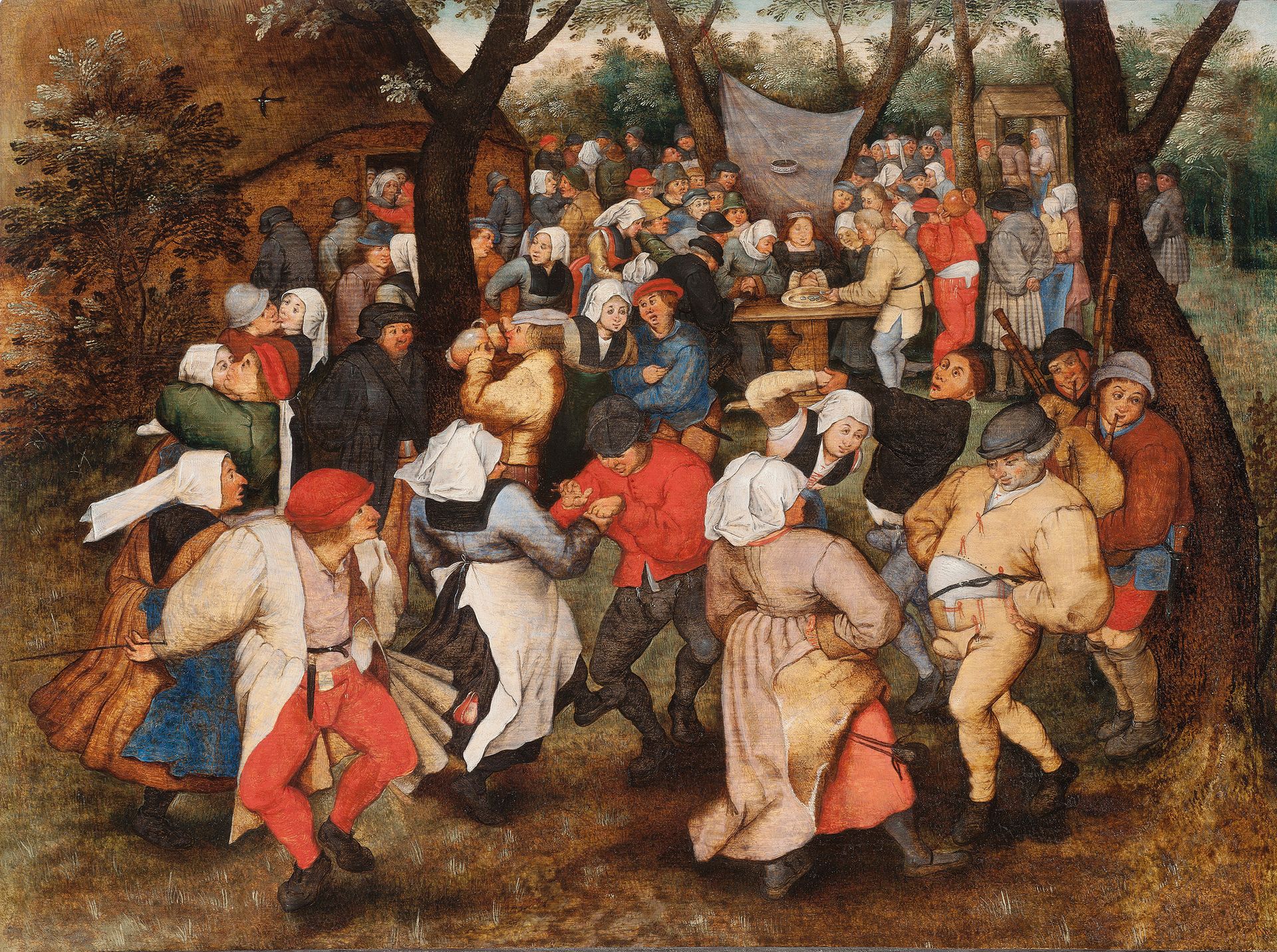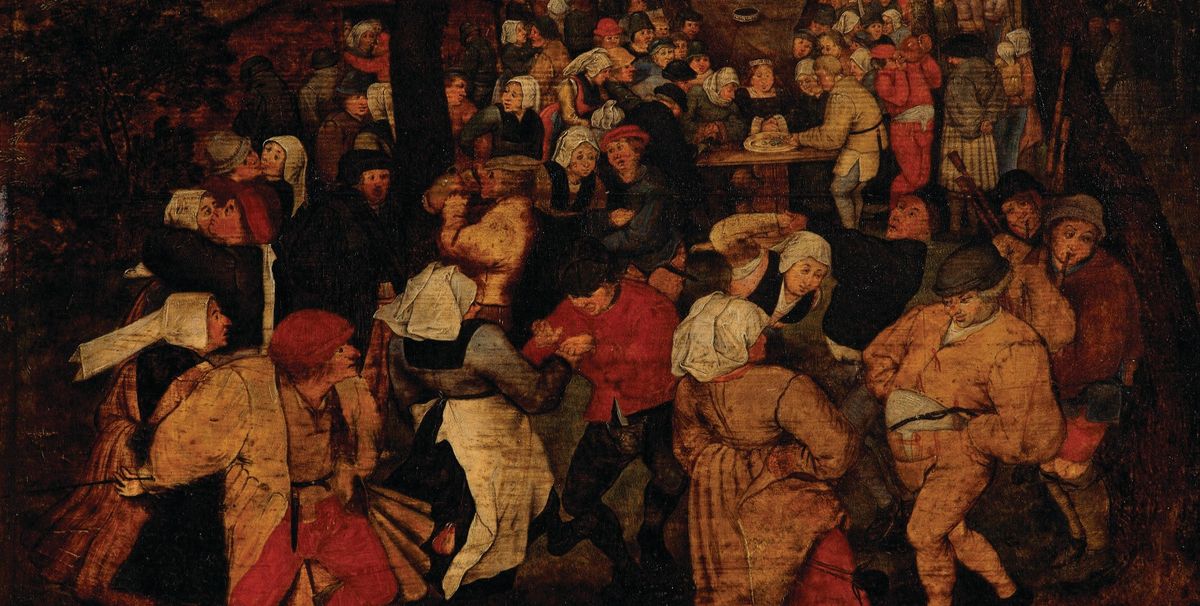The recent conservation and technical examination of a picture from the Holburne Museum in Bath has confirmed that the painting is indeed a work by Pieter Brueghel the Younger (1564-1638) and not by a follower of the Flemish master as was previously thought. The revelation means that the Holburne is now the UK’s largest public repository of works by the artist.
The unsigned and undated work, Wedding Dance in the Open Air (1607-15), had been in store for several years when the UK museum’s director, Jennifer Scott, decided to pull it out for a closer look. After securing funding from the private donor David Pike, she contacted the conservator Elizabeth Holford, whose treatment of another of the Holburne’s paintings, Visit to a Farmhouse, in 2011 led to its attribution to Pieter Brueghel the Younger.
In this recent treatment, Holford removed old retouchings and two layers of varnish, transforming Wedding Dance in the Open Air from a nocturnal celebration to a scene of daytime revelry in which a group of peasants drink, dance, kiss and generally appear to thoroughly enjoy themselves. The handling of paint is consistent with known works by Pieter Brueghel the Younger.
An examination using infrared reflectography revealed the skilfully executed underdrawing—a characteristic of the artist’s working method. “That’s when a hunch turned into much more,” Scott says, adding that classic details, such as the trees curving around the figures, are also typical of the artist. “[The drawing] has a liveliness and sureness of touch.”
According to Scott, Brueghel specialists, including Christina Currie, concur that the work is the real deal. There are more than 100 versions of Wedding Dance in the Open Air, 31 of which can be attributed to Pieter Brueghel the Younger’s own hand.
The composition was inspired by a lost painting made by the artist’s father, Pieter Bruegel the Elder, who was renowned for his peasant festival scenes and went to great lengths to perfect his compositions, even masquerading as a reveller to observe unnoticed. After his death at the age of 44, Pieter Brueghel the Younger and his brother Jan Brueghel the Elder (both of whom reinserted the “h”, dropped by their father, into their surname to distinguish themselves from their illustrious parent) produced copies of their father’s work in addition to creating their own compositions.

Their peasant scenes were particularly popular, Scott says, noting that there is something “homely and comforting about them”. In the 16th and 17th centuries, they epitomised simpler times before foreign rule put Flemish traditions at risk. In the early 19th century in Britain, when the country was under threat of invasion during the Napoleonic wars, they appealed to collectors such as William Holburne.
Wedding Dance in the Open Air is being shown with around 35 works in an exhibition on the artistic legacy of the Bruegel family. Scott hopes visitors not only leave with a better grasp of the family tree, which reads like a Who’s Who of important Flemish artists, but also come to view Pieter Brueghel the Younger as an innovator in his own right and not just a copier of his father’s work. “I really think it’s his moment,” she says. Bath Spa University and the Old Master dealer Johnny Van Haeften are supporting the exhibition.
• Bruegel: Defining a Dynasty, Holburne Museum, Bath, 11 February-4 June


